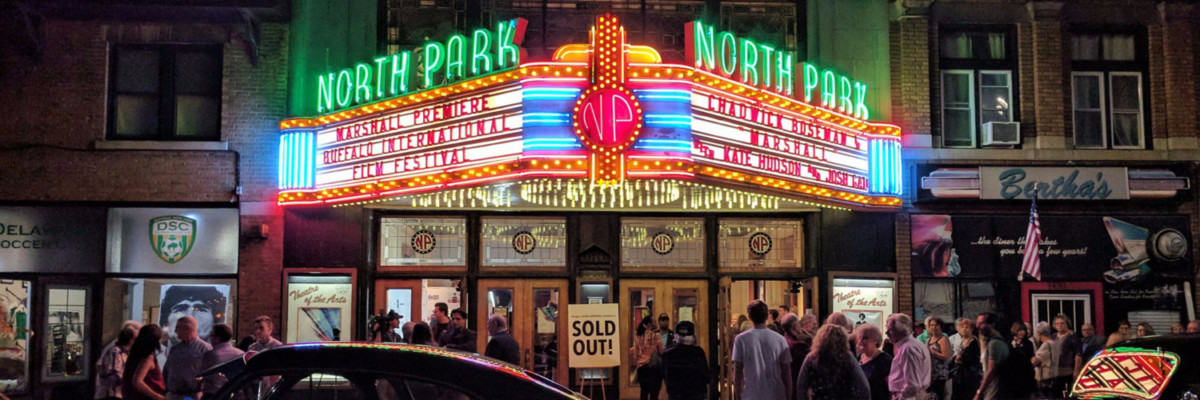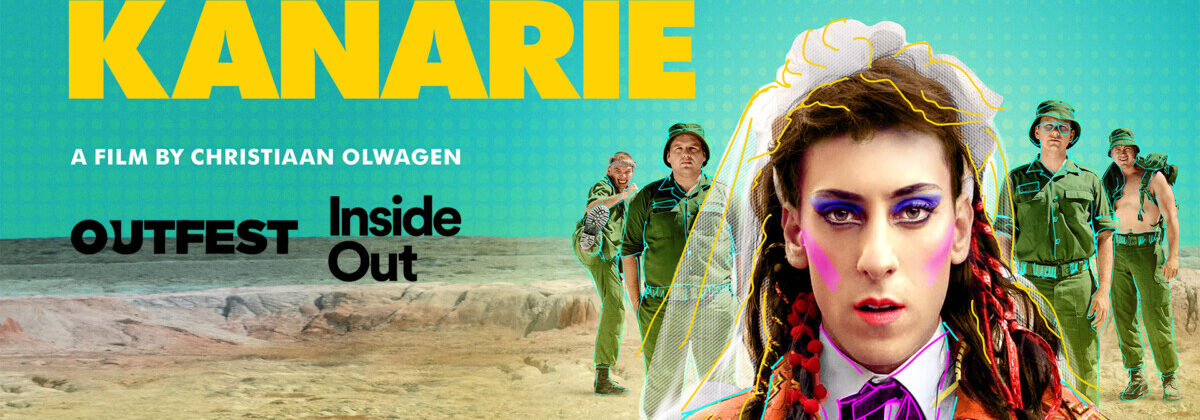The Film Festival Doctor (Yes, she’s a real doctor!) Dr. Rebekah Louisa Smith, explores in further detail how film festivals are adjusting to the CV-19 pandemic. She was lucky to interview the awesome John Fink; Artistic Director of one of her favourite film festivals; the Buffalo International Film Festival. Below John explains how he transformed his event to become a successful hybrid festival during October 2020.
- John Hi, welcome to The Film Festival Doctor’s blog 🙂 could you kindly tell my reader a little bit about yourself and your awesome film festival the Buffalo International Film Festival?
Hey – it’s great to be here, thanks for the opportunity. I’m a filmmaker, curator, film critic and a college professor. I currently serve as the Buffalo International Film Festival’s artistic director. I had joined the BIFF in 2015 which had been a relaunch year with new leadership and a new flagship venue, the historic North Park Theater.
Since then the festival has collaborated with several non-profit venues and organizations in Western New York to create a festival that reflects the diversity of the region while also celebrating the region’s growing film industry. Each Fall, film fans in Western New York and Southern Ontario join us for about 120 shorts and features, BIFF Off-Screen art events (including instillations and performances), industry panels, and parties. We offer programming throughout the city of Buffalo and encourage visitors to interact with a unique city we love.
- How did this year’s BIFF go?
All things considered BIFF went quite well. The online experience enabled to us to welcome new and old friends online, from around the world creating a different kind of community. One of the joys for audiences and festival organizers is connecting with filmmakers and I believe in the online format we were able to provide some of those opportunities to all, not just those that were able to physically join us in Buffalo.
- What significant changes did you have to make to the festival due to the impact of CV-19?
Indoor cinemas in New York State were not permitted to open until after the festival’s dates which required us to move online and to a drive-in format for select films. For our streaming platform we partnered with Eventive which offered a robust platform several enhanced security features that distributors and filmmakers trust and an easy interface for patrons to engage with. Eventive is a company that was built by film festival professionals and they were terrific to work with.
We moved our panels and performance programing online and streamed via YouTube, and we also offered a few exhibitions in Buffalo in socially distanced settings in galleries and in public spaces.
I feel grateful to my festival colleagues from around the country for sharing their experience and to the Film Festival Alliance for bringing us together on a weekly basis to talk through the virtual pivot. As a fall festival we had a little more runway to figure out a solution that we believed was right for our community and audience.
- How many films did you screen?
This year we reduced our line-up slightly to 100 films from 120 last year, while adding a new program line (Racial Justice in View). We were also proud to partner with the National Film Board of Canada this year to present our Decolonial Spotlight program, a stunning series of short films by indigenous filmmakers.
- What were the most challenging things to figure out and do differently when you moved the festival on-line and host drive in screenings?
While we had held open the possibility that we might be able to offer a limited number of indoor screenings at the North Park Theater following social distancing guidelines, we invested time and resources towards pivoting to a virtual first experience. After evaluating each platform the Eventive made the most sense for us.
A drive-in option was compelling and we were fortunate that a pop-up drive-in was started this summer by a friend, Chris Dearing, one of the managers of the North Park Theatre. BIFF receives support from the Erie County, NY as well as the city of Buffalo, and so it was important for us to host a few physical events within the city if possible.
Chris graciously agreed to host a few screenings for us if indoor theaters couldn’t open in time and we programed the drive-in with community-centric program in mind, each film screened was filmed in either Buffalo or New York State, all but one with a close Buffalo connection.
Moving online, apart from managing print traffic was by no means easier. While we were running around a little less during the festival, Anna Scime (our interim executive director) and I were largely glued to our computers for two weeks to moderate and produce our Q&As, red carpets, performances, and panels. We spent the weeks leading up to the festival both preparing for and doing much of the work we would have done during the festival hosting filmmakers virtually.
- What were the most positive things that occurred when you moved the festival on-line and drive in screenings?
The online festival experience allowed filmmakers and audiences more time and space to enjoy the film selections while the drive-in screenings provided audiences with a chance to connect with each other and share a safe, communal experience. Filmmakers did find and connect with one another through their films and it was gratifying to see those friendships form virtually.
In terms of audience, some film teams requested that we make their film available either nationally or world-wide and those filmmakers were amazing as partners and they reached out to friends and family and brought new audiences to BIFF.
- How did the drive-in screenings go?
The drive-in screenings were mostly well attended and filmmakers appreciated the opportunity to have their work screened in a communal setting. As we were limited in what we could offer in the drive-in format, we focused on the kinds of films and programs that have historically been the best attended including our Western New York Stories shorts program.
The first film we showed at the drive-in was very popular, Runaway, the debut feature from Meg Knowles, a filmmaker, video artist and professor from Buffalo. It was so wonderful to see many friends coming together to share a nice fall evening at a social distance and experience the film together and discuss it afterwords via a filmmaker Q&A. Socially, although we were all outdoors, it felt a lot like being at a film festival or a gallery opening party, and that’s an experience that’s a little harder to replicate online.
- Will you use the on-line part of the film festival during next year’s festival?
There is an awful lot to consider as we move forward and we intend to listen, learn and contribute to the conversation as film festivals of all sizes navigate these shifts. At the end of the day I do believe, based upon the drive-in screenings I’ve attended at BIFF, the New York Film Festival and the Montclair Film Festival, that gathering is what makes the festival experience special. Online can only simulate that experience to a certain degree and I’m sure there will be new ways to build the community. While Sundance has announced bold virtual and physical screening initiatives, I’m particularly excited to see how South By Southwest moves their entire film, music and technology conference online next year.
It’s too early to tell what Fall 2021 will look like in terms of our local economy, public health and the state of both film production and cinematic exhibition, so we will monitor the situation and plan accordingly for our 15th annual festival.
We remain very grateful to our partners for their flexibility this year but there are certainly areas of the business model that may need to be addressed. This year premiere status was fuzzy as it should have been due to the circumstances and uncertainty of the year and it is unknown what conversations will evolve on that front as larger festivals like Sundance move to online experiences that presumably will enable the general public outside of Utah to screen first run festival films during the festival.
Personally I am excited by the opportunity for filmmakers to opt-in to sharing their films with a wider audience via an online encore presentation during the festival weekend. There are situations where this might make sense as a value-add for some filmmakers including locally produced films and shorts programs.
I think if the model is calibrated correctly by offering a window during the festival that enables a limited number of patrons to discover their film outside of one showtime, at one theater in Buffalo, NY, it could be appealing to filmmakers seeking a larger platform than one scheduled showtime can provide.
- What are your plans for next year’s BIFF and when will submissions open?
Submission for the 15th annual Buffalo International Film Festival will open in January. We are hoping for a return to our home base, the historic North Park Theater which is celebrating its 100th anniversary this year. The return to physical, indoor events will of course be dictated by public health, however I am optimistic brighter days are ahead.
Awesome thank you John! You can find out more about the Buffalo International Film Festival here – https://www.buffalofilm.org/




